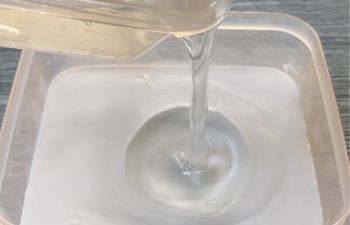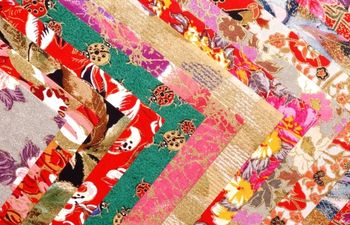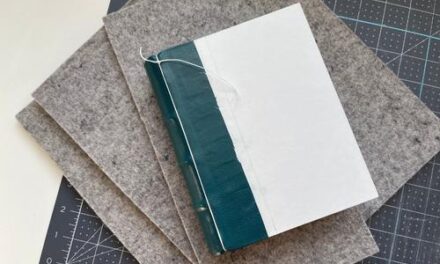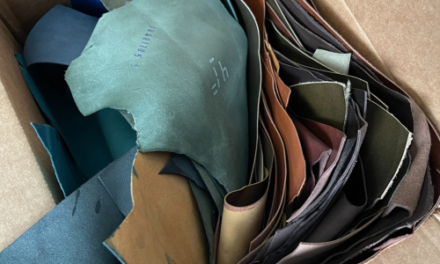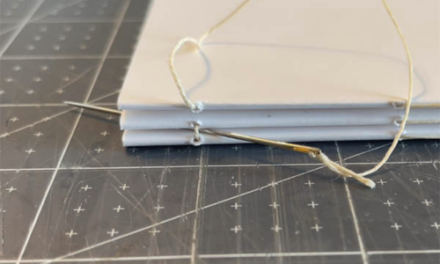Whether you’re new to book making or an experienced binder, you’ve probably heard of PVA. PVA (polyvinyl acetate) is an affordable, non-toxic and quick-drying adhesive that remains flexible. While these properties make it a perfect bookbinding glue, but there are times (ahem…the casebinding) when having more time to reposition paper is needed. To achieve this while keeping all the good stuff PVA has to offer, I’m going to show you how to make methyl cellulose solution and then mix it with your PVA glue.
What is Methyl Cellulose?
Methyl Cellulose is a compound derived from plant fiber that is not naturally digestible by humans, but is completely non-toxic and organic. When heated with a solution of sodium hydroxide and then treated with methyl chloride, it becomes a sticky viscous substance that is weak on its own but strong when added to PVA. It spreads easier and takes longer to dry than traditional PVA, which makes it easier for you to reposition paper before it sets.
Methyl Cellulose is typically sold as a powder that can be mixed at home with water. This mixture is then added to PVA to obtain the characteristics we’re looking for (easy application, extended dry time).
What are the best uses for Methyl Cellulose?
There are many different types of bookbinding glues and each has their own purpose. Methyl Cellulose by itself is quite weak, so it’s best to use it in combination with PVA.
If you’d like to learn more about these adhesives, feel free to visit my blog post on the topic or download my free quick reference chart below. It includes 10 different adhesives from each category (animal, plant and synthetic) along with benefits, disadvantages and best projects for each.
How to Make Methyl Cellulose from powder
Makes about a (1/2) cup of paste
*Recipe can be doubled or halved, broken into thirds or quartered to make as much or as little as necessary.
Ingredients:
- 1/2 tablespoon Methyl Cellulose powder/granules
- 1/4 cup cold water
- 1/4 cup hot water
Tools:
- Measuring spoons
- (2) air tight containers (I used tupperware)
- 1 or 2 liquid measuring cups for the hot and cold water
- Whisk or fork
- Spoon
Step 1
Instructions:
The most important step is to add COLD water first.
- Add 1/2 tablespoon of Methyl Cellulose powder/granules to a container (I used one that includes an air tight lid)
- Pour 1/4 cup of cold water and mix with a fork or whisk
- Pour 1/4 cup of hot water to the container and mix again with a fork or whisk
- Cover the container with an air tight lid (or as best you can with plastic wrap or other to keep air out) and store for 24 hours at room temperature
- Store in a sealed container for up to 6 months.
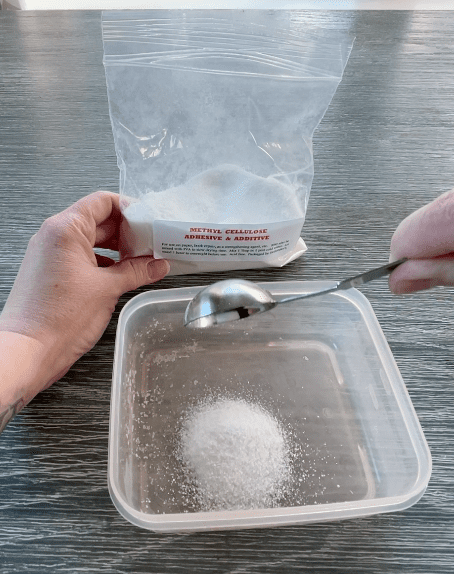

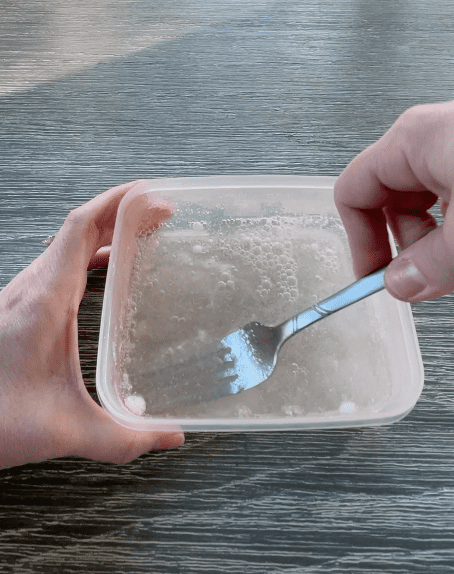
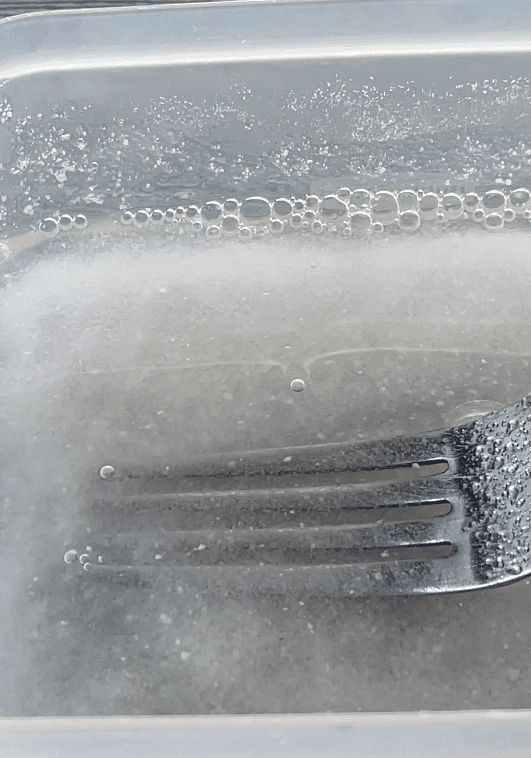


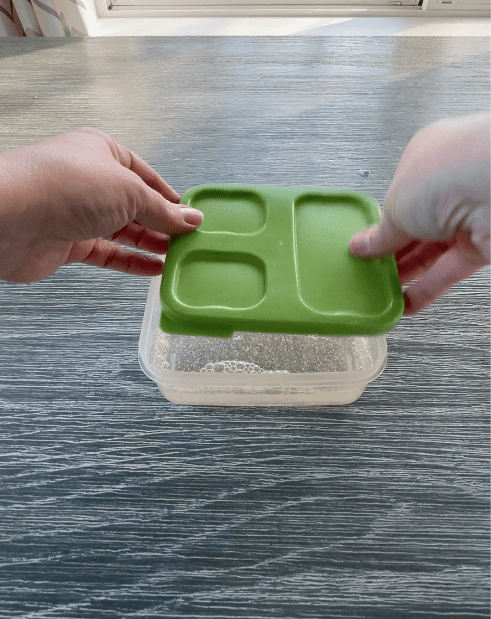
Step 2
Instructions to combine with PVA:
We want a ratio of 40% Methyl Cellulose and 60% is PVA. To achieve this, I took the following steps:
- Remove the lid from the Methyl Cellulose container and check the consistency with a spoon. It should look and pour like a thick, clear gel
- In a separate container (air tight is best), pour 2/3 cup PVA. Any PVA will work
- Slowly pour about 1/3 cup of Methyl Cellulose into the container with the PVA and mix together with a spoon
- Once combined, the solution should have a yogurt-like consistency (a little on the runnier side)
- Cover with an airtight lid and store for up to 3 months in a cool, dry place
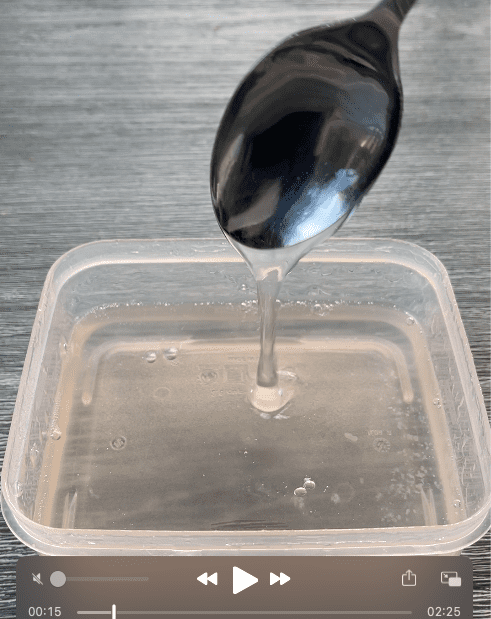
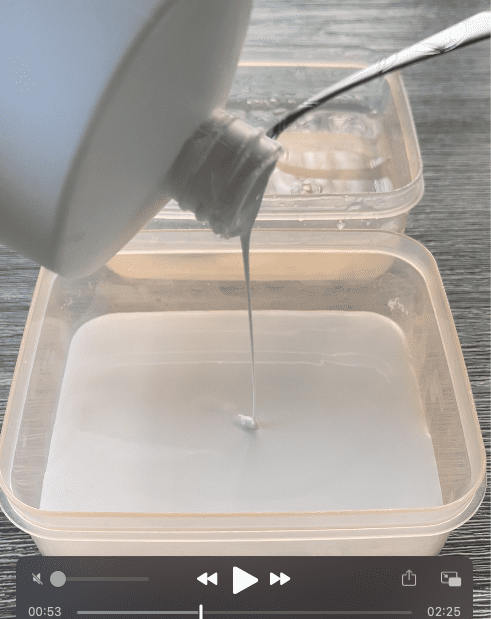

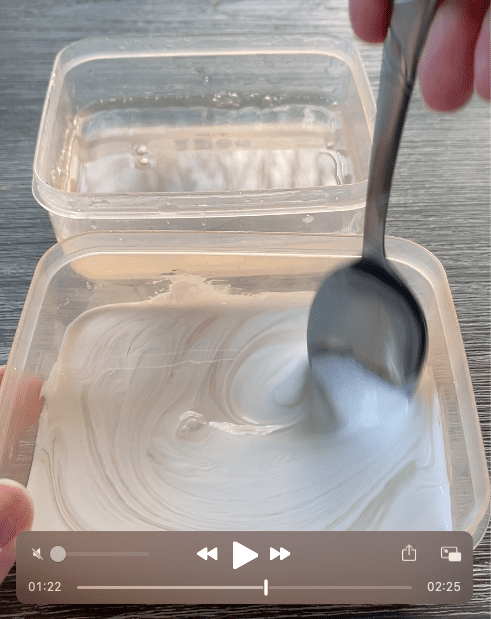
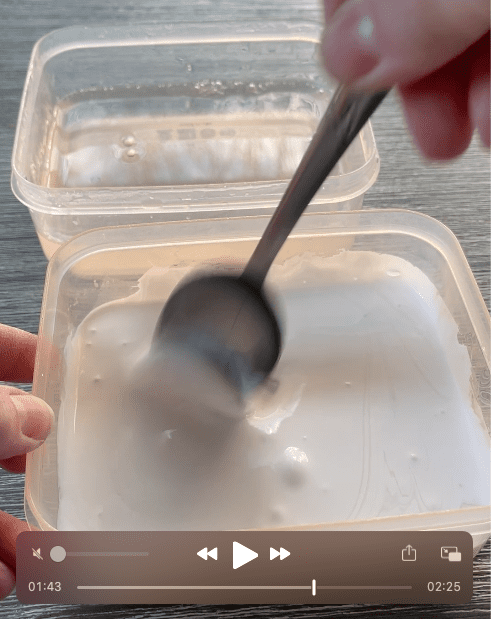
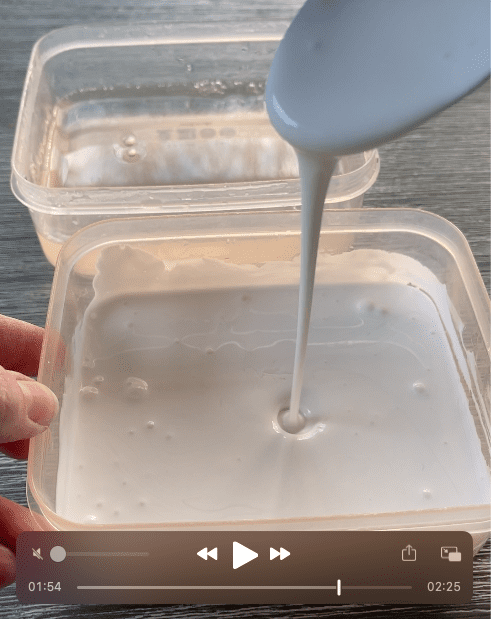
Video: How to Make & Mix Methyl Cellulose with PVA for Bookbinding
Where to buy Methyl Cellulose and PVA bookbinding glues
I’ve personally purchased from these retailers, but buy wherever you feel comfortable. Totally my opinion.
- Methyl Cellulose (plant-based) – Talas Online or Hollander’s
- PVA (synthetic) – Standard: Hollander’s or LineCo
- PVA (synthetic) – Jade 403: Hollander’s or Colophon
I hope you loved this tutorial!
More bookbinding goodness
✨ What tools do I need to get started bookbinding?
- Bookbinding Tools & Supplies Quick Start Guide – learn all about book making tools, which to buy first & where to go online
- Pick up my popular Complete Starter Bookbinding Tools Kit – all the bookbinding essentials in one spot
🌟 Looking for a simple way to start making books?
Try a Complete Book Materials Kit. Each one has everything you need (+ tutorials & videos) to make a beautiful book without all the fuss.
Thank you for taking me along on your book making journey!
Misty
